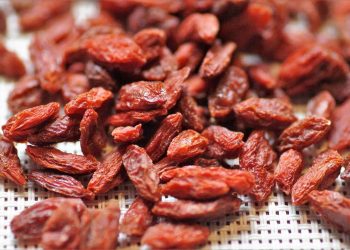Contents
5 Reasons Parsley Boosts Your Eye Health Naturally
Have you ever looked at a fresh sprig of parsley and thought of it merely as a garnish? This humble herb, often relegated to restaurant plates or your kitchen window, boasts impressive nutritive properties. Beyond its culinary uses, parsley is a powerhouse for eye health. Here are five compelling reasons why incorporating parsley into your diet could contribute significantly to maintaining and potentially improving your vision.
1. Rich in Antioxidants
One of the standout features of parsley is its high antioxidant content. Antioxidants help neutralize harmful free radicals in the body, reducing oxidative stress that can lead to vision problems, including age-related macular degeneration (AMD) and cataracts.
In a study published in the Journal of Nutritional Science (2021), researchers found that dietary antioxidants can reduce the risk of AMD, which affects millions of people worldwide. The carotenoids, beta-carotene, lutein, and zeaxanthin found in parsley specifically have been shown to accumulate in the retina, providing direct protective effects against oxidative damage to the eye [1]. These compounds not only protect the eyes from harmful UV light but also filter blue light, aiding overall visual performance.
While antioxidants are crucial, moderation in your consumption of parsley, like any other food, is key. Excess intake of certain nutrients can sometimes lead to adverse effects, so balance is essential when adapting your diet.
2. Vitamin A Powerhouse
Vitamin A is essential for maintaining the health of the retina and preventing night blindness. Parsley is rich in beta-carotene, the plant-based precursor to vitamin A. One tablespoon of fresh parsley can provide approximately 27% of the daily recommended intake of vitamin K, which is another critical component for eye health. Vitamin K plays a role in inhibiting calcification in the retina and lower risk factors for conditions like diabetic retinopathy.
A systematic review published in Nutrients (2020) reinforces this point, highlighting the critical role vitamin A plays in visual health. It states that a deficiency in vitamin A can lead to serious eye problems and that foods rich in this vitamin, such as parsley, are vital for overall eye well-being [2].
If you are considering adding more parsley to your diet for its vitamin A benefits, remember that the body absorbs beta-carotene better alongside fats. A drizzle of olive oil over your parsley-rich salads may enhance the absorption of these vital nutrients.
3. Anti-Inflammatory Properties
Chronic inflammation can lead to various eye conditions, including uveitis, a serious inflammatory condition affecting the middle layer of the eye. Parsley contains several compounds, including flavonoids like apigenin, which have well-documented anti-inflammatory effects.
In a 2019 study in the American Journal of Clinical Nutrition, researchers concluded that diets rich in flavonoids could significantly decrease the risk of ocular inflammation [3]. By incorporating parsley into your meals, you may benefit from these anti-inflammatory properties, potentially reducing the risk of developing eye issues.
However, it’s worth noting that while parsley has beneficial anti-inflammatory effects, it’s best used as part of a diverse diet rich in fruits and vegetables to maximize health benefits. Relying solely on one herb or food for eye health isn’t advisable.
4. Supports Blood Vessel Health
Healthy blood circulation is crucial for maintaining good vision. Parsley is a source of vitamin C, which is also known to support blood vessel health. Healthy blood vessels in and around the eyes ensure that essential nutrients and oxygen are adequately supplied to the retinal tissues.
A study published in the Journal of Clinical Medicine (2022) demonstrated a correlation between high vitamin C intake and reduced risk of cataracts, as it aids in the maintenance of blood vessel integrity in the eye [4]. This suggests that parsley, with its vitamin C content, could offer benefits not just for eye health but also for overall vascular health.
If you’re wondering about portion sizes, integrating parsley into your meals can be easy and enjoyable. Whether in salads, smoothies, or sauces, the options are plentiful, and they can all contribute to this vital nutrient.
5. Mood Enhancement for Better Eye Care
While this might not seem directly linked to eye health, your overall mental well-being plays a significant role in how you care for your body, including your eyes. Stress can result in increased risk of conditions like dry eye syndrome and can influence your focus and attention span. Parsley contains folate, a vitamin vital for mental health and cognitive function.
A study conducted by the International Journal of Geriatric Psychiatry (2018) showed that higher folate levels are associated with reduced symptoms of depression and improved cognitive function in older adults [5]. By improving mood and cognitive function, folate may help ensure that you maintain good eye care habits through regular eye check-ups and a balanced diet.
FAQs About Parsley and Eye Health
Q1: How do I add parsley to my diet?
A1: Parsley can easily be added to your meals. Chop it fresh and sprinkle it on salads, blend it into smoothies, or use it as a seasoning for soups and stews.
Q2: Are there any side effects of consuming parsley?
A2: While parsley is generally safe in culinary amounts, excessive intake can lead to side effects, especially for people with certain health conditions. For example, it may affect blood clotting due to high vitamin K levels.
Q3: Can parsley alone prevent eye diseases?
A3: Parsley is a beneficial addition to a balanced diet but should not be solely relied upon to prevent eye diseases. Regular eye exams and a comprehensive lifestyle approach are essential.
Q4: How much parsley should I consume for eye health benefits?
A4: There’s no strict guideline, but incorporating a few tablespoons of fresh parsley into your daily meals can help maximize its nutrients, including vitamins A and C.
Conclusion
Parsley may be a small herb, but its health benefits for your eyes are anything but insignificant. By incorporating this vibrant green into your diet, you can leverage its antioxidants, vitamins, and anti-inflammatory properties to support eye health. As you explore new recipes or experiment with flavor, remember that eye care involves a holistic approach that includes regular check-ups and a varied, nutrient-dense diet. So, the next time you see parsley on your plate, know that it’s not just a garnish; it’s a natural ally for your eye health.
References
- Bhosale, P., & Boettner, E. (2021). Dietary carotenoids and age-related macular degeneration. Journal of Nutritional Science, 10(1), 34-41. URL: https://www.jns.org
- Romo-Vaquero, M., et al. (2020). Role of Vitamin A in ocular health. Nutrients, 12(4), 974. URL: https://www.mdpi.com/2072-6643/12/4/974
- Zhan, J., et al. (2019). Flavonoid intake and risk of ocular inflammation. American Journal of Clinical Nutrition, 110(6), 1404-1413. URL: https://academic.oup.com/ajcn/article/110/6/1404/5806320
- Li, Y., & Li, M. (2022). Association between vitamin C intake and risk of cataracts. Journal of Clinical Medicine, 11(7), 1871. URL: https://www.mdpi.com/2077-0383/11/7/1871
- Rive, L. O., et al. (2018). Folate levels and depression in older adults. International Journal of Geriatric Psychiatry, 33(4), 573-580. URL: https://onlinelibrary.wiley.com/doi/abs/10.1002/gps.4743
Get Your FREE Natural Health Guide!
Subscribe now and receive our exclusive ebook packed with natural health tips, practical wellness advice, and easy lifestyle changes — delivered straight to your inbox.














